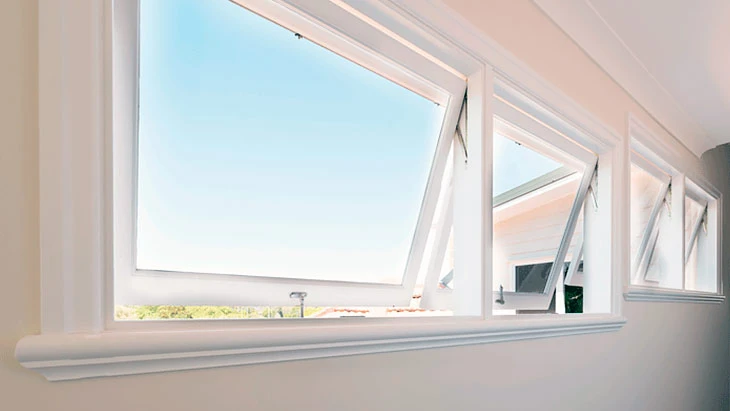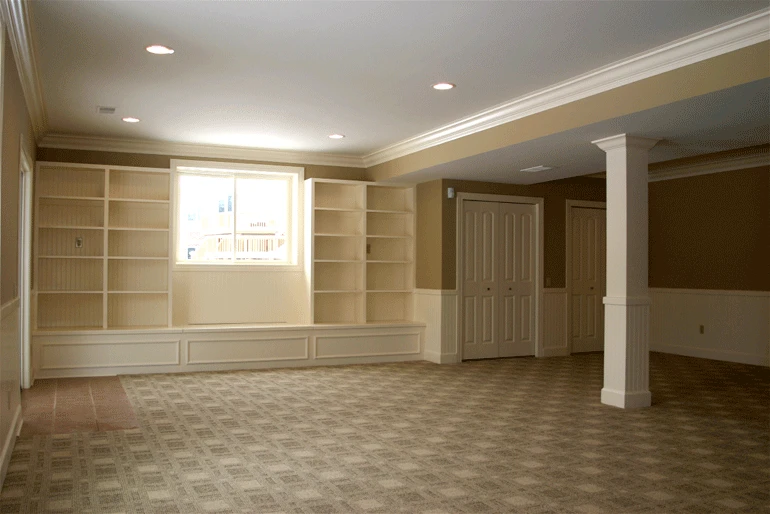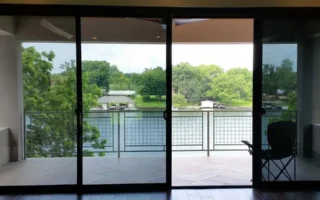Choosing between egress and hopper windows ultimately depends on your needs and preferences. Egress windows prioritize safety, making them essential for basements or any sleeping areas in a home where exit routes are necessary. They provide adequate natural light while allowing easy access in case of emergencies. On the other hand, hopper windows excel at ventilation and space efficiency. They’re ideal for smaller spaces, such as bathrooms or utility rooms, where fresh air is needed without compromising wall space. Factors like local building codes, safety standards, and personal aesthetics are important when deciding which window type suits your property best. Each option has unique advantages that cater to different situations and design preferences. Understanding these differences can lead you to make an informed choice that enhances both functionality and comfort in your living space.
Definition and Purpose of Egress Windows

Egress windows are specialized openings designed to provide a safe exit from a building in an emergency. They are often installed in basements or bedrooms, where traditional exits may be limited. By meeting specific size and accessibility requirements, they ensure that occupants can escape quickly during crises. These windows also allow for natural light and ventilation, making enclosed spaces more inviting. Beyond safety, egress windows help meet local building codes and enhance property value. In addition to serving as emergency exits, these windows contribute to the overall aesthetics of your home. Their design options range from classic casement styles to contemporary sliding versions, offering homeowners functionality and style.
Types of Egress Windows
Egress windows come in several types, each designed for specific needs and situations. There are several types of casement windows, but the most common is the casement window. It swings open on a hinge, providing easy access to fresh air and natural light. Another popular option is the sliding egress window. This style opens horizontally, allowing for wider openings without occupying interior space. The compact design is perfect for smaller rooms that require every inch to be utilized. Then there’s the double-hung window, which features two sashes that slide vertically. This design offers versatility; you can choose how much ventilation you want by opening one or both sashes. There are basement egress windows specifically made for below-grade spaces. They often include wells to ensure proper drainage and safety while maximizing escape routes during emergencies.
Benefits of Installing Egress Windows

Egress windows offer crucial safety advantages for homes, especially in basements. They provide an emergency escape route during unforeseen situations like fires or natural disasters. This feature can be vital for the well-being of your family. Egress windows enhance ventilation and natural light in lower-level spaces. A brighter environment feels more inviting and reduces reliance on artificial lighting. These windows also boost property value. Potential buyers often appreciate the added safety features and improved living conditions that egress windows bring to a home. Installing these windows may help you meet local building codes if you finish a basement or add living space.
Definition and Purpose of Hopper Windows
Hopper windows are a unique style that is open inward from the top. This design allows for efficient ventilation while maintaining security and privacy. Typically used in basements or small spaces, hopper windows provide an excellent solution for areas where traditional openings might not fit. They can be installed lower to the ground, making them perfect for rooms requiring natural light without compromising safety. A benefit is their ability to keep out rain and debris when opened partially. The slanted design directs water away from the interior, ensuring your space stays dry. Hopper windows also contribute to energy efficiency by creating a tight seal when closed. This feature helps reduce heating and cooling costs—an advantage worth considering during renovations or new constructions.
Differences between Egress and Hopper Windows in Terms of Design and Functionality

Egress windows and hopper windows differ significantly in design and functionality. Egress windows are often larger and designed to meet safety codes by providing an emergency exit from basements or lower-level rooms. Their size allows for easy escape during emergencies. Hopper windows are smaller and typically installed higher up on walls. They open inward at the top, making them ideal for ventilation while maintaining privacy and security. Functionally, egress windows prioritize accessibility; they often have a clear opening space that meets specific building regulations. Hopper windows focus primarily on airflow control rather than emergency exits. Egress models usually feature double-hung designs or sliders, allowing more room when opened. Meanwhile, hoppers may use casement mechanisms that pivot inward without needing much external space.
Factors to Consider When Choosing Between Egress and Hopper Windows
Choosing between egress and hopper windows involves several key factors. First, consider your local building codes. Many areas have specific requirements for egress windows, particularly in bedrooms or basements. Egress windows are primarily designed for safety and escape routes. Hopper windows are more suited for ventilation needs or small spaces. Aesthetics also play a role in your decision. Egress windows tend to be larger, enhancing natural light flow while creating a more open feel.
In contrast, hopper windows offer a compact design that fits snugly into smaller areas. Evaluate installation costs and maintenance needs as well. Depending on location and climate conditions, some window types may require different treatments, which could influence your choice significantly.




